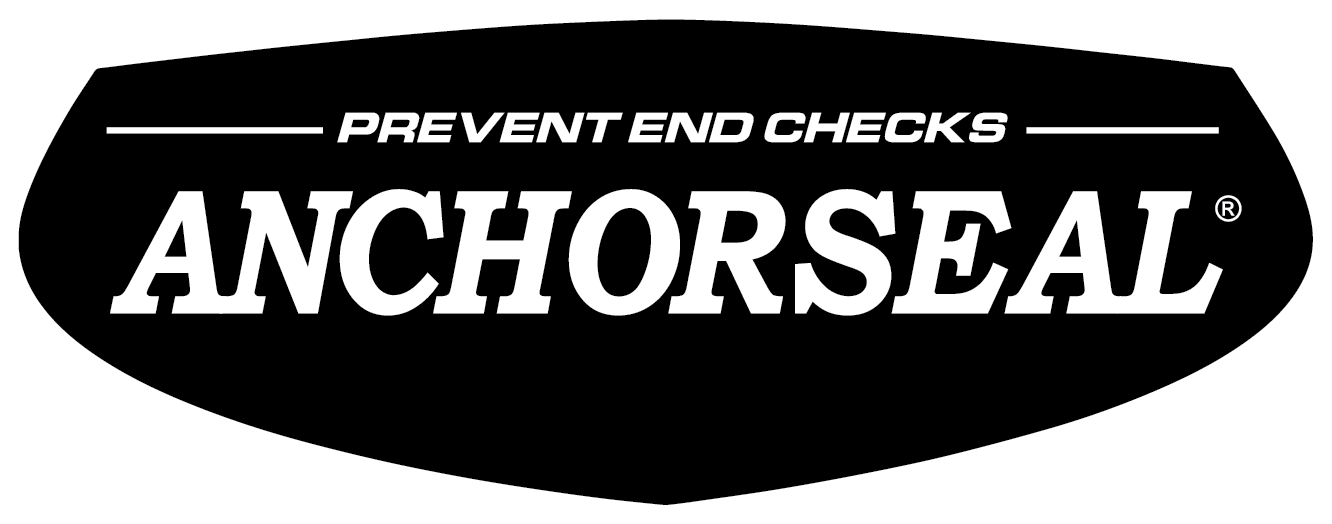Wood is a natural material that expands and contracts as it absorbs and releases moisture. While this movement is normal, end grain is particularly vulnerable to rapid moisture loss, which can lead to cracking, splitting, and long-term structural damage. Applying an end grain sealer is one of the most effective ways to protect logs, lumber, and woodturning blanks from these common issues.
At U-C Coatings, we’ve been helping woodworkers, sawmills, and manufacturers protect their wood for decades. This guide will cover why sealing is necessary and the best practices for applying an end grain sealer to protect your wood from damage.
Why Use an End Grain Sealer?
Wood dries unevenly, and moisture loss through the end grain happens much faster than through the face grain. This rapid drying can result in end checking, warping, and structural weaknesses that shorten the lifespan of wood.

Applying an end grain sealer immediately after cutting helps slow moisture loss and protects wood from damage. ANCHORSEAL® is designed to create a protective barrier, allowing wood to dry more evenly while maintaining its strength and quality.
How to Apply End Grain Sealer for Best Results
Proper application of an end grain sealer will provide long-lasting protection and minimize waste. Follow these steps to get the most out of your sealing process.

1. Prepare the Wood
Before applying end grain sealer, make sure the wood is clean, dry, and free from dust or debris. If the ends are rough, a light sanding will create a smoother surface for better adhesion.
For freshly cut logs and lumber, apply ANCHORSEAL® as soon as possible. Wood can start to check within hours of being cut, so sealing early is key to reducing moisture-related damage.
2. Choose Your Application Method
Depending on the size of the project, different application methods may work best:
- Brush – Best for small projects like woodturning blanks and slabs.
- Roller – Ideal for sealing multiple boards quickly.
- Sprayer – The most efficient choice for large-scale applications, such as logs or stacks of lumber.
For larger projects, we recommend using a gas engine, electric, or air-operated sprayer. If using a manual sprayer, a 0.21”/0.55 mm tip or larger will provide consistent coverage.
3. Apply an Even Coat
Using your preferred application method, apply a thick, uniform coat of ANCHORSEAL® to the exposed end grain. The goal is to fully saturate the end grain to prevent rapid moisture loss.
For logs or lumber over 24 inches in diameter, a second coat may be needed. If reapplying, wait about 15 minutes between coats while the first layer is still wet to allow for maximum absorption.
4. Allow Proper Drying Time
Once applied, the sealer will dry to the touch within a few hours, but we recommend leaving the wood undisturbed for at least 24 hours to allow for full absorption. During this time, avoid direct exposure to rain or extreme sunlight, as these conditions can interfere with the drying process.
5. Maintain and Reapply as Needed
Over time, end grain sealers may wear down due to handling, exposure, or environmental factors. We recommend periodically checking the sealed wood and reapplying as needed to maintain its protective barrier.
For logs, lumber, and wood stored outdoors, an annual reapplication will help preserve long-term durability and prevent moisture-related damage.
Conclusion
Applying an end grain sealer is a simple yet essential step in wood preservation. Without it, wood is prone to rapid drying, leading to cracks, warping, and long-term instability. ANCHORSEAL has been a trusted industry solution for decades, offering reliable protection for logs, lumber, and woodworking projects.
For more information on wood protection solutions, visit ANCHORSEAL® and explore our full range of wood preservation products at U-C Coatings.











